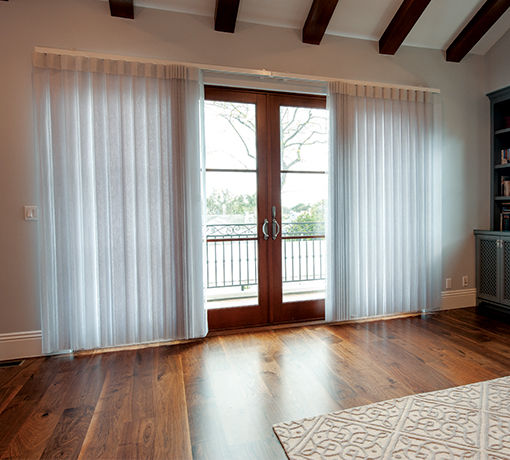Understanding the Difference between Light Filtering Shades and Solar Shades
- Sheila Richardson
- Jun 3
- 3 min read
When selecting the perfect window treatment, two terms often come up that can sound similar but serve quite different purposes: light filtering shades and solar shades. Both are great choices when you want to soften the light entering your home, reduce glare, and protect your interiors—but the details matter. Let’s break down the key differences, how each option performs, and where they work best in your home.
☀️ What Are Light Filtering Shades?
Light filtering shades are designed to soften incoming light rather than block it completely. They allow natural light to gently fill a room while still offering a layer of privacy. Think of them as a fabric diffuser—they help you enjoy daylight without the harshness or exposure.
These are ideal for:
Bedrooms and bathrooms (where privacy is key)
Living spaces that need natural light without being too exposed
Homes with close neighbors or street-facing windows
Privacy Level: Excellent. During the day and night, light filtering shades obscure visibility from the outside, making them a great option for private spaces like bedrooms.
🌞 What Are Solar Shades?
Solar shades are designed specifically to block UV rays and reduce heat and glare from the sun. They are made of an engineered fabric with a measured openness factor—that’s the percentage of UV light and visibility the shade allows through. The lower the number, the greater the light blockage and privacy.
Common openness levels include:
1%: Offers maximum UV protection and privacy, minimal visibility
3% to 5%: A good balance between view and protection
10% and above: Offers more view-through but less glare reduction
Privacy Level: Moderate. Solar shades work best during the day; however, at night, with interior lights on, they may become see-through from the outside. For bedrooms or bathrooms, you may want to layer them with drapery or choose light filtering shades instead.
💡 Key Differences at a Glance
Feature | Light Filtering Shades | Solar Shades |
Privacy | High – great for bedrooms | Moderate – best during the day |
UV Protection | Some (varies by fabric) | Excellent – blocks up to 99% of UV rays |
View | Opaque – no visibility | Transparent – maintains outdoor view |
Light Control | Softens light | Reduces glare and brightness |
Heat Control | Helps keep room cooler | Excellent thermal control |
Best For | Bedrooms, bathrooms, living rooms | Living rooms, offices, sunrooms, patios |
🌿 Benefits Both Options Share
Both light filtering and solar shades contribute to:
Reducing glare on TVs and devices
Protecting furnishings, flooring, and art from UV damage
Lowering indoor temperatures, which means your AC doesn’t have to work as hard
Creating a more comfortable, visually calming environment
🏠 Which Shade Is Right for You?
If you’re prioritizing privacy and softness, especially in bedrooms or bathrooms, light filtering shades are the better fit. They give you light without exposure. On the other hand, if your main concern is sun control, heat, and preserving your view, then solar shades are the way to go—especially in spaces like living rooms, offices, or sunrooms with large, sun-drenched windows.
You don’t have to compromise style for function. Both options come in a wide range of colors, textures, and control mechanisms—manual, cordless, or motorized—to complement your home’s design perfectly.
Need help choosing the perfect shade for your space? I’d love to help you strike the right balance between beauty, comfort, and practicality. Let’s brighten your home the smart way—without the heat, glare, or lack of privacy.

✨ Let the light in—on your terms.


Comments